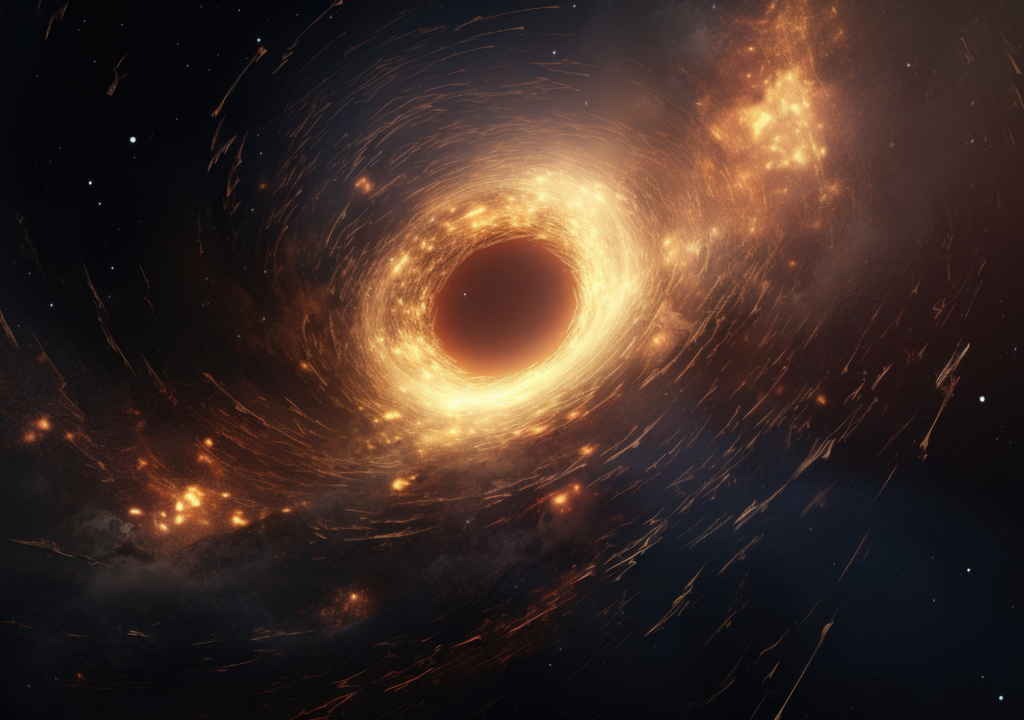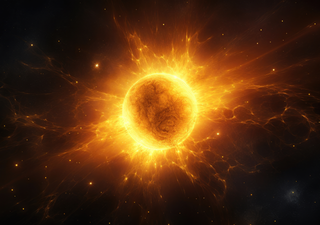Quantum mechanics tries to explain the reason for the disappearance of black holes
Scientists now have a possible explanation for why primordial black holes have never been observed in the universe.

When we think of black holes, we immediately think of objects larger than the solar system. These are the famous supermassive black holes found at the center of each galaxy. However, the black holes that have been observed have different sizes, ranging from the size of planets to sizes larger than planetary systems.
Since the last century, physicists have theorised about the possibility of the existence of black holes called primordial black holes. These objects would have been generated in the early moments of the universe due to density perturbations in the space-time fabric. Primordial black holes could come in different sizes, from larger than the solar system to the size of an atom.
To date, no primordial black hole has been observed despite increasing efforts in the search for black holes. They have earned the nickname disappearing black holes. A group of physicists proposed a new explanation using Quantum Mechanics for the reason for this disappearance.
Big Bang and inflation
One of the most accepted models within Cosmology is the ΛCDM, which is the model in charge of describing the Big Bang. According to this model, the universe is expanding and at some point in the past condensed into a single point. When this point began to expand it was called the Big Bang.
Inflation is the name of one of the first phases of the universe where the first acceleration occurred where the universe rapidly expanded from the size of a lemon to that of a galaxy.
A few moments after the Big Bang, a process called inflation occurred where the universe expanded rapidly. During this moment, the disturbances that existed in the fabric of space-time were also amplified due to the expansion. One possible explanation is that these amplified perturbations allowed for more complex structures hundreds of millions of years later.
Primordial black holes
One of the consequences of this inflation is the appearance of primordial black holes. They would be black holes that were created precisely when inflation occurred and regions with density differences collapsed. Physicist Stephen Hawking estimated that some of these primordial black holes would reach the end of their lives in the last billion years of the universe.
One hypothesis is that primordial black holes are responsible for at least some of the calculated dark matter. Because they could be isolated and difficult to observe, they would be perceived gravitationally but not through electromagnetic radiation like dark matter. But the mystery still remains as to why we didn't see any specimens.
Quantum field theory
One of the areas of Physics is Quantum Field Theory (QFT), which combines concepts from quantum mechanics and the theory of relativity. The idea is to describe the particles and interactions present within the Standard Model. Within TQC, particles are described as field excitations found at every point in space.
One of the challenges of TQC is to combine general relativity with the rest of the description within the area. Dark matter also doesn't fit the TQC description well. However, recent work argues that by using TQC tools it is possible to explain why primordial black holes disappear.
Disappearing black holes
One explanation is that during the early universe and inflation, waves had high amplitudes but short wavelengths. The shorter the wavelength, the more energetic the wave. These waves would be associated with the generation of primordial black holes in these early moments.
What the study found is that when looking at the earliest moments of the universe and these waves, known as CMBs, only a few wavelengths are observed. This would explain why we observed few primordial black holes even in CMB observations. These wavelengths associated with primordial black holes would be unrelated.








